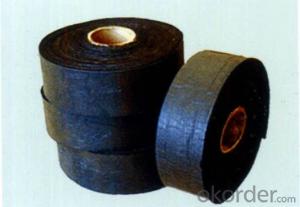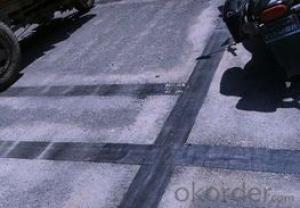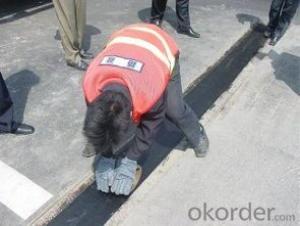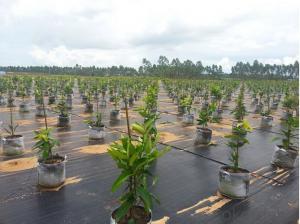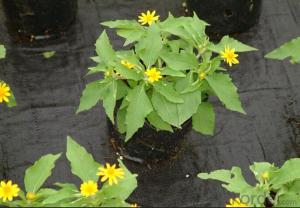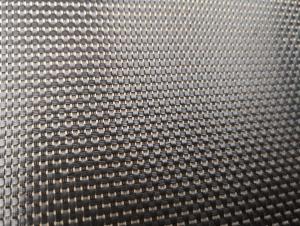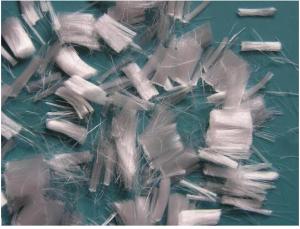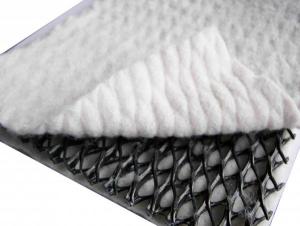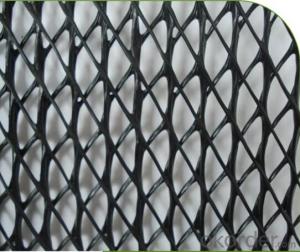Never Run Crack, Crack Stick, Stick To Belt
- Loading Port:
- Qingdao
- Payment Terms:
- TT OR LC
- Min Order Qty:
- 1 m²
- Supply Capability:
- 1000000 m²/month
OKorder Service Pledge
OKorder Financial Service
You Might Also Like
Crack stick construction

Anti-crack construction effect
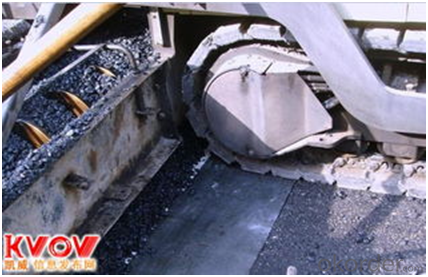
Crack stick
Product introduction
Crack stick (also known as crack stick) is composed of asphalt base polymer, high-strength tensile tire base, high temperature resistance and compatibility with asphalt high-strength compounded fabric. Stick in the cracks or the spalling of the asphalt concrete surface, can reduce and cut off its effect on the temperature shrinkage stress of pavement, thus reduce the reflection crack through the surface of the trend, laying and road because of the isolates abrasion at the grass-roots level and the upper layer, so that the top layer from the effects of multidirectional displacement and the shear stress, for roads, Bridges, airports, etc.
The main performance
1, the isolation effect. Laying crack and the crack surface and asphalt layer isolation, to avoid the direct contact with asphalt layer cracking level, crack tensile stress at the grass-roots level cannot directly transfer the asphalt concrete pavement, reduce the bonding force between the base and surface, but polymer anti-crack stick can enable the lower level very good adhesion into a whole, jointly bear the role of vehicle load, is enough to prevent the interface on the lower level of relative displacement and keep continuous.
2, reinforcement effect. Crack has a certain strength, can absorb a certain amount of tensile stress in the crack, when the crack tensile stress increases and is greater than the crack of tensile strength, crack resistance to deformation, the surface began to crack under the tensile stress in the stick to pass up. Crack stick level will bear all the tensile stress in the crack, crack obviously have the effect of reinforcement, in this sense, it improved the tensile strength of pavement structure layer.
3, energy dissipation cushion. Crack is a certain extensibility of material, high polymer has good low temperature flexibility, laid between the asphalt surface, equivalent to set up an elastic layer, crack tensile stress at the grass-roots level through the anti-cracking polymer spread to a wide range, so as to relieve stress intensity cracks, flexible interlayer can partly tensile energy absorption effect.
4, water seepage control effect. Crack stick seepage-proof layer polymer can form a complete, can partition to the subgrade pavement water penetration, in order to ensure the strength of the base, the base materials properties not deteriorate further. Crack stick for asphalt surface can effectively inhibit cracks propagated up, in the practical engineering play a role of crack resistance of crack and energy absorption effect.
- Q:What is the purpose of using geocells in flood protection applications?
- The purpose of using geocells in flood protection applications is to provide a stable and durable solution for erosion control and flood prevention. Geocells help to reinforce and stabilize earthen structures such as levees, riverbanks, and drainage channels, preventing soil erosion and protecting against floodwater overflow. They provide a cost-effective and environmentally friendly solution that can withstand the forces of floodwaters, reducing the risk of damage and ensuring the safety of surrounding communities.
- Q:Can earthwork products be used for creating outdoor meditation spaces?
- Yes, earthwork products can be used for creating outdoor meditation spaces. Earthwork products such as natural stones, gravel, sand, and soil can be utilized to design and construct serene and tranquil outdoor spaces for meditation. These materials can be used to create pathways, seating areas, Zen gardens, or even small ponds, enhancing the overall atmosphere of relaxation and peace in an outdoor meditation space.
- Q:How are geocells used for slope stabilization?
- Geocells are used for slope stabilization by providing a reinforced structure that helps prevent soil erosion and slope failures. These honeycomb-like cells are filled with soil or aggregate material and then placed on the slope surface. The geocells confine and stabilize the fill material, creating a stronger and more resistant slope. This reinforcement helps to distribute the weight of the slope evenly, reducing the potential for landslides and erosion. Additionally, geocells enhance vegetation growth on the slope, further enhancing its stability.
- Q:How are geosynthetic clay liners used in wastewater treatment?
- Geosynthetic clay liners (GCLs) are used in wastewater treatment as a barrier to prevent the leakage of contaminants from the treatment site. They are installed in containment areas, such as ponds or landfills, to provide a barrier between the wastewater and the surrounding environment. GCLs are highly effective due to their ability to swell and self-seal when in contact with water, creating a tight seal and preventing the migration of pollutants. Additionally, they are cost-effective and easy to install, making them a popular choice in wastewater treatment facilities.
- Q:Are earthwork products suitable for constructing underground tunnels?
- Yes, earthwork products such as soil, rocks, and other natural materials are commonly used in the construction of underground tunnels. These materials are often excavated from the site and can be compacted or stabilized to create a solid foundation or support structure for the tunnel. Additionally, earthwork products are also used for backfilling and lining the tunnel walls to provide stability and prevent ground movement.
- Q:Can earthwork products be used for slope stabilization in earthquake-prone areas?
- Yes, earthwork products can be used for slope stabilization in earthquake-prone areas. These products, such as geotextiles, geogrids, and retaining walls, are designed to enhance the stability of slopes and prevent soil erosion. They can withstand the dynamic forces generated during earthquakes and provide additional support to the slopes, minimizing the risk of landslides or slope failures. However, it is essential to consider the specific geological conditions and engineering requirements of each location to ensure the effectiveness and appropriateness of the earthwork products for slope stabilization in earthquake-prone areas.
- Q:Do earthwork products require any special maintenance?
- Yes, earthwork products such as retaining walls or berms may require regular maintenance to ensure their stability and effectiveness. This can include inspecting for any signs of erosion, settling, or damage, and addressing them promptly. Additionally, vegetation control and regular cleaning may be necessary to prevent blockages or obstructions. Overall, proper maintenance is crucial to extend the lifespan and functionality of earthwork products.
- Q:Are earthwork products suitable for use in cemetery construction?
- Yes, earthwork products are suitable for use in cemetery construction. They can be used for various purposes such as leveling the ground, building retaining walls, creating burial plots, and constructing pathways. These products, including soil, gravel, and stones, can be effectively utilized to enhance the aesthetics and functionality of cemeteries.
- Q:How do geosynthetic meshes help in soil stabilization for embankments?
- Geosynthetic meshes help in soil stabilization for embankments by providing reinforcement and confinement to the soil, improving its strength and stability. These meshes act as a barrier against soil erosion, preventing the loss of soil particles and maintaining the embankment's integrity. The meshes also distribute the applied loads more evenly across the embankment, reducing stress concentrations and the potential for slope failure. Additionally, geosynthetic meshes allow for efficient drainage of excess water, preventing saturation and maintaining the embankment's stability in wet conditions.
- Q:How do earthwork products affect the drainage system of a construction project?
- Earthwork products can have a significant impact on the drainage system of a construction project. Properly designed and installed earthwork products, such as drainage pipes, culverts, and retaining walls, can help manage stormwater runoff, prevent erosion, and maintain the stability of the surrounding soil. These products provide a means for water to be effectively directed away from the construction site, reducing the risk of flooding and water damage. On the other hand, if earthwork products are improperly installed or inadequate for the site conditions, they can hinder drainage, causing water to pool or accumulate in unwanted areas. This can lead to soil erosion, structural instability, and potential damage to the overall construction project. Therefore, it is crucial to carefully consider and implement appropriate earthwork products to ensure effective drainage and proper functioning of the construction site.
1. Manufacturer Overview |
|
|---|---|
| Location | |
| Year Established | |
| Annual Output Value | |
| Main Markets | |
| Company Certifications | |
2. Manufacturer Certificates |
|
|---|---|
| a) Certification Name | |
| Range | |
| Reference | |
| Validity Period | |
3. Manufacturer Capability |
|
|---|---|
| a)Trade Capacity | |
| Nearest Port | |
| Export Percentage | |
| No.of Employees in Trade Department | |
| Language Spoken: | |
| b)Factory Information | |
| Factory Size: | |
| No. of Production Lines | |
| Contract Manufacturing | |
| Product Price Range | |
Send your message to us
Never Run Crack, Crack Stick, Stick To Belt
- Loading Port:
- Qingdao
- Payment Terms:
- TT OR LC
- Min Order Qty:
- 1 m²
- Supply Capability:
- 1000000 m²/month
OKorder Service Pledge
OKorder Financial Service
Similar products
New products
Hot products
